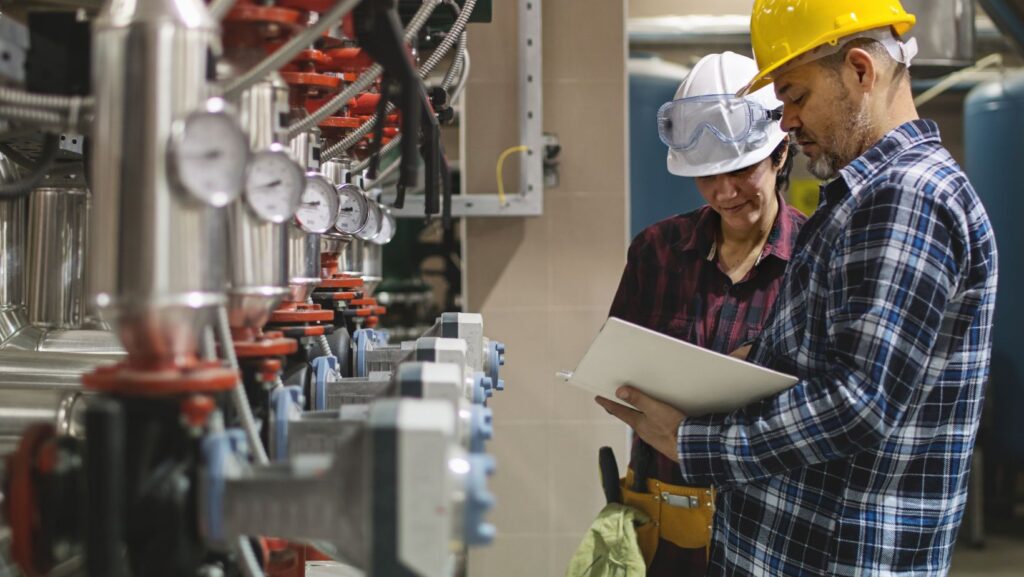Do you ever wonder what goes into the maintenance and upkeep of your business’s space? Facilities managers have mastered the complex art of planned and reactive maintenance – two processes that work in harmony to keep buildings running like clockwork.
Read on as we break down key elements of these two approaches to facilities management, explaining why they are essential for ensuring a safe, well-maintained environment.

What is planned and reactive maintenance?
These are two necessary components of facilities management – planned maintenance refers to a regular system or schedule that is designed in order to keep equipment, assets, and infrastructure functioning optimally.
Reactive maintenance, on the other hand, refers to untimely services and repairs needed for unexpected breakdowns or issues that occur, but were not predicted or accounted for in the planned routine.
Why are they such an important part of facilities management?
Both types of maintenance are valuable and beneficial, since they provide an overall comprehensive approach to maintaining an efficient and safe environment. Often combining planned, preventative maintenance along with reactive maintenance can lead to lower repair costs in the long run while ensuring functionality of the facility all year round.
Ultimately, setting up the right maintenance system can make a world of difference. Establishing simple but effective procedures that ensure regular upkeep of your building or complex is key – this might include pre-scheduled cleaning and repairs, as well as routine checks for any potential problems in advance. Taking these precautions will help protect your property from potential damage or destruction brought on by wear and tear or neglect, allowing you to operate with greater efficiency.
What’s more, running preventative maintenance programmes helps lower costs in the long run because it reduces the likelihood of major repairs or replacements down the line. Whatever schedule or system you put in place, making sure all staff members receive proper training and guidance is essential for its success. With the right maintenance plan in place, you can rest assured that your facilities are taken care of properly.
What does planned maintenance include?
Facilities management teams need to ensure that the buildings they maintain are safe and up-to-date. Therefore, it is important to think strategically about planned maintenance and all that it entails. Depending on the size of the facility, this might include preventative maintenance for vital systems such as plumbing, lifts, and HVAC. Regular inspections and tests can also help identify problems early on, in order to reduce disruption or emergencies later on.
Moreover, planned maintenance scheduling involves creating detailed plans for timings and durations of routine checks and replacement tasks. This can help facilities managers be intentional about the time given for maintenance tasks and maximise efficiency of operations. All in all, planned maintenance can be a huge benefit for facilities management teams – it not only boosts efficiency but also helps in keeping buildings safe and compliant with regulations over time.
What does reactive maintenance entail?
Facilities management provides integral support for businesses, from protecting the safety and wellbeing of employees and customers to ensuring core systems remain operational. Reactive maintenance forms a fundamental part of this, responding quickly to unexpected problems that arise from time-to-time. This might include broken air conditioners and faulty plumbing, as well as the replacement of worn out parts and machinery.
Regular inspections are key for preventing larger issues down the line and should be conducted with promptness, careful attention, and skill in order to guarantee a safe environment for all. This makes reactive maintenance a fundamental facet of facilities management as it allows teams to act quickly in order to ensure operational continuity across operations.
What happens in the absence of effective planned and reactive maintenance?
Without effective planned and reactive maintenance, things can quickly spiral out of control. Small problems can quickly turn into huge issues requiring extensive resources and tremendous amounts of time to resolve. Not only that, but safety is at risk when appropriate maintenance isn’t performed in a timely manner.
Poorly maintained systems are prone to failure, which can lead to hazardous outcomes for workers, bystanders, and anyone else involved. In short, proper maintenance is imperative for the longevity, safety and efficiency of any system!
Stay on top of planned and reactive maintenance plans with expert support
Today, effective planned and reactive maintenance is essential for ensuring the safety and efficiency of facilities management. By implementing regular inspections and timely repairs, teams can reduce costs, minimise disruption to operations, and protect assets from damage or neglect.
Additionally, having a well-thought-out maintenance plan in place can help facilities managers be strategic about how their time and resources are allocated, ultimately leading to greater efficiency and success.
At First Class Facilities Management, we take care of your maintenance, so you don’t have to. Get in touch today to find out how we can support your business.


